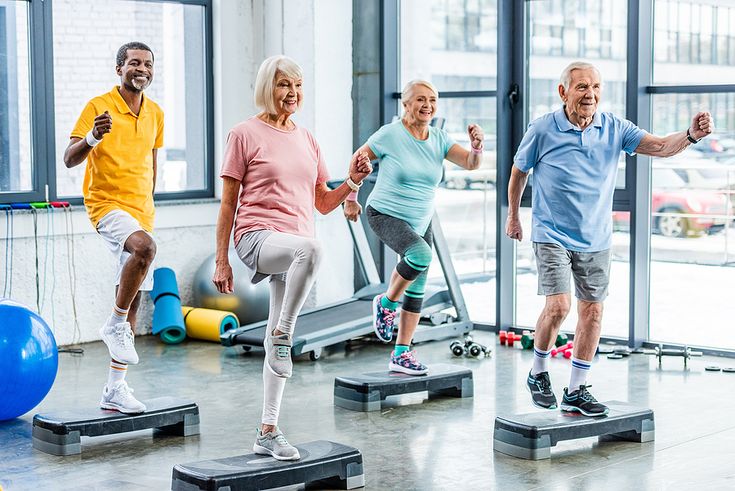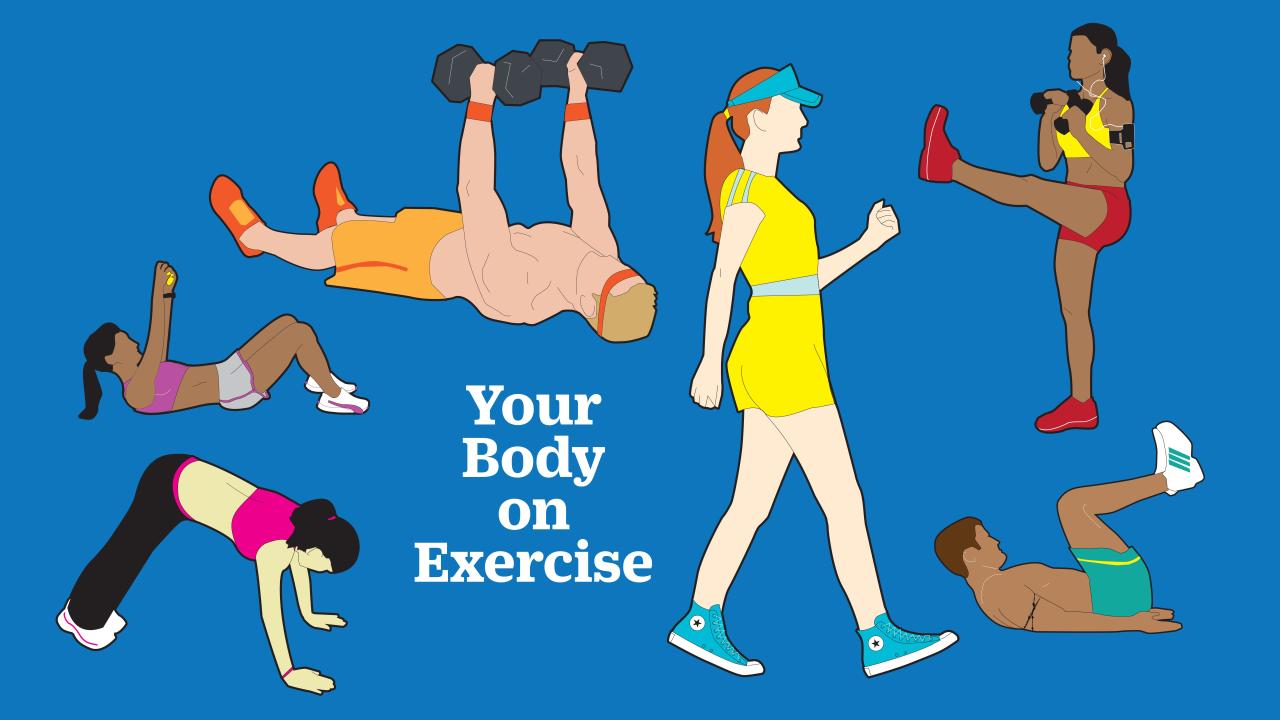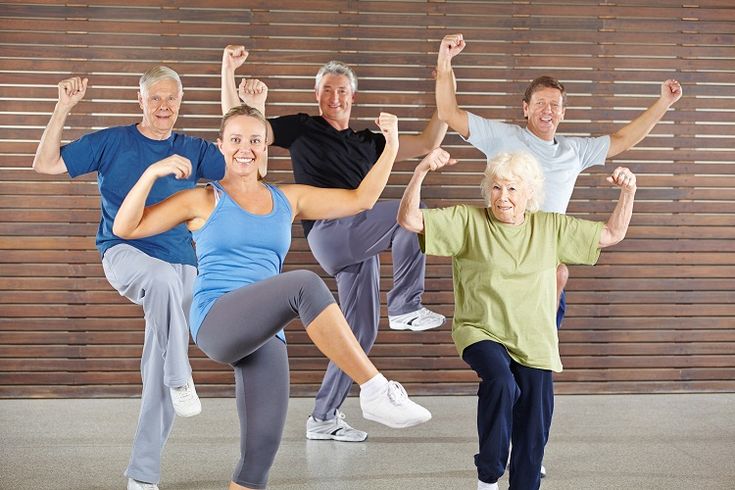
Exercise Benefits Every Age
In a world increasingly characterized by sedentary lifestyles and digital immersion, the profound and multifaceted advantages of exercise remain a timeless truth. It’s far more than just a means to achieve a desired physique; it’s a fundamental pillar of human health and vitality, offering an unparalleled return on investment for well-being across the entire lifespan. From the formative years of childhood development to the golden years of senior living, the consistent engagement in physical activity confers a cascade of benefits that impact physical, mental, and emotional health. For anyone seeking to optimize their longevity, enhance quality of life, and unlock their full potential at any stage, understanding and embracing the power of movement is essential. This universal relevance makes “exercise benefits” an evergreen and highly sought-after topic, crucial for driving high Google AdSense revenue through comprehensive, authoritative content. This extensive guide will delve into the transformative impact of exercise, detailing its specific advantages for every age group, exploring various forms of activity, and providing actionable insights to seamlessly integrate movement into daily life.
The Universal Language of Movement: Why Exercise Matters
At its core, exercise is simply planned, structured, and repetitive bodily movement performed to improve or maintain one or more components of physical fitness. Its importance cannot be overstated. In an era dominated by chronic diseases linked to inactivity—such as heart disease, type 2 diabetes, and obesity—regular physical activity stands as one of the most powerful preventative and therapeutic interventions available. It’s a natural medicine with virtually no negative side effects when performed safely and appropriately.
The overarching benefits of consistent exercise include:
- Enhanced Physical Health: Strengthening bones and muscles, improving cardiovascular function, maintaining a healthy weight, and boosting metabolism.
- Improved Mental Well-being: Reducing stress, alleviating symptoms of anxiety and depression, boosting mood, and enhancing cognitive function.
- Increased Energy Levels: Paradoxically, expending energy through exercise often leads to a sustained increase in overall energy and reduced fatigue.
- Better Sleep Quality: Regular physical activity helps regulate sleep patterns, leading to deeper, more restorative sleep.
- Disease Prevention: Significantly lowering the risk of numerous chronic diseases, including various cancers, diabetes, and heart conditions.
- Boosted Immune Function: Strengthening the body’s natural defenses against infections and illnesses.
- Enhanced Quality of Life: Enabling greater independence, mobility, and the ability to enjoy daily activities throughout life.
These benefits are not exclusive to elite athletes; they are accessible to everyone, regardless of age, current fitness level, or physical limitations. The key lies in finding the right types of activity and making movement a consistent part of life.
Exercise Through the Ages: Tailored Benefits for Every Stage
While the fundamental benefits of exercise are universal, its specific impacts and optimal forms can vary significantly across different life stages, addressing the unique physiological and developmental needs of each age group.
A. Childhood and Adolescence: Building a Foundation
The early years are critical for establishing healthy habits and physical literacy. Exercise in children and adolescents is crucial for physical, cognitive, and social development.
- Healthy Growth and Development: Physical activity supports healthy bone density development, muscle growth, and coordination. It helps establish proper posture and motor skills.
- Obesity Prevention: Regular exercise is a cornerstone in preventing childhood obesity, a growing global health crisis. It helps manage body weight and reduces the risk of associated health issues later in life.
- Improved Cognitive Function: Studies show that active children often perform better academically, exhibiting improved concentration, memory, and problem-solving skills. Physical activity increases blood flow to the brain and stimulates the release of growth factors.
- Enhanced Mental Health: Exercise can significantly reduce symptoms of anxiety and depression in young people, promoting emotional regulation and self-esteem. It provides a healthy outlet for energy and stress.
- Social Skill Development: Team sports and group activities foster cooperation, communication, leadership, and fair play, building essential social skills.
- Establishing Lifelong Habits: Children who are active are more likely to remain active as adults, setting a foundation for long-term health and well-being.
Recommended Activities for Children and Adolescents: Play-based activities (running, jumping, climbing), team sports (soccer, basketball, swimming), cycling, dancing, gymnastics, martial arts. The focus should be on fun and variety to foster a positive relationship with movement.
B. Adulthood: Maintaining Momentum and Mitigating Risk
For adults, exercise shifts from development to maintenance, risk reduction, and stress management. This period is crucial for preventing the onset of lifestyle-related diseases.
- Cardiovascular Health: Regular aerobic exercise strengthens the heart muscle, lowers blood pressure, improves cholesterol levels, and significantly reduces the risk of heart disease, stroke, and hypertension.
- Weight Management: Physical activity burns calories, builds lean muscle mass (which boosts metabolism), and helps maintain a healthy body composition, crucial for preventing obesity and related metabolic disorders.
- Diabetes Prevention and Management: Exercise improves insulin sensitivity, helping to regulate blood sugar levels and significantly reducing the risk of developing type 2 diabetes. For those with diabetes, it aids in better glucose control.
- Bone and Muscle Strength: Weight-bearing and strength training exercises help maintain bone density, reducing the risk of osteoporosis. They also preserve muscle mass, which naturally declines with age (sarcopenia), crucial for strength and mobility.
- Stress Reduction and Mood Enhancement: Exercise is a powerful antidote to stress, releasing endorphins (natural mood elevators) and reducing stress hormones like cortisol. It can significantly alleviate symptoms of anxiety and depression, improving overall mental well-being.
- Improved Sleep Quality: Consistent exercise helps regulate the body’s circadian rhythm, leading to deeper, more restorative sleep.
- Enhanced Cognitive Function: Regular physical activity supports brain health, improving memory, attention span, and overall cognitive performance. It can also reduce the risk of cognitive decline in later life.
Recommended Activities for Adults: A mix of aerobic activities (brisk walking, running, swimming, cycling), strength training (weightlifting, bodyweight exercises), flexibility (yoga, stretching), and balance exercises.
C. Older Adults: Preserving Independence and Vitality
Exercise becomes even more critical in older adulthood, playing a profound role in maintaining independence, preventing falls, and enhancing quality of life. It’s a powerful tool against age-related decline.
- Fall Prevention: Balance and strength training exercises are paramount for older adults, significantly reducing the risk of falls, which can lead to serious injuries and loss of independence.
- Maintaining Mobility and Flexibility: Regular movement helps preserve range of motion in joints and prevents stiffness, allowing older adults to perform daily activities with greater ease.
- Combating Sarcopenia: Strength training is vital for combating age-related muscle loss (sarcopenia), preserving strength, and supporting metabolic health.
- Bone Health: Weight-bearing exercises help maintain bone density, crucial for preventing osteoporosis and fractures, which are more common in older age.
- Cardiovascular and Metabolic Health: Continues to lower the risk of heart disease, stroke, and diabetes, and helps manage existing conditions.
- Cognitive Preservation: Regular physical activity is strongly linked to maintaining cognitive function, improving memory, and reducing the risk of dementia and Alzheimer’s disease. It enhances blood flow to the brain and neuroplasticity.
- Enhanced Mental Well-being: Exercise provides social opportunities, reduces isolation, and continues to be a potent tool against depression and anxiety, fostering a positive outlook.
- Pain Management: For those with chronic conditions like arthritis, appropriate exercise can reduce joint pain and stiffness, improving function.
Recommended Activities for Older Adults: Low-impact aerobic activities (walking, swimming, water aerobics, cycling), strength training (light weights, resistance bands, bodyweight), balance exercises (Tai Chi, standing on one leg), and flexibility exercises (gentle stretching, chair yoga). The emphasis should be on safety and consistency.
Components of a Comprehensive Exercise Regimen
To reap the full spectrum of benefits, a balanced exercise regimen should ideally incorporate various types of physical activity. The American Heart Association and World Health Organization provide guidelines, but the exact mix should be tailored to individual capabilities and goals.
A. Aerobic (Cardiovascular) Exercise: Heart Health and Endurance
Aerobic exercise involves sustained activities that increase your heart rate and breathing, improving the efficiency of your cardiovascular system.
- Benefits: Strengthens the heart and lungs, improves blood circulation, lowers blood pressure, reduces the risk of chronic diseases, enhances stamina and endurance, aids in weight management, and boosts mood.
- Examples: Brisk walking, jogging, running, swimming, cycling, dancing, hiking, elliptical training, aerobics classes, sports like basketball or soccer.
- Guidelines: Aim for at least 150 minutes of moderate-intensity aerobic activity or 75 minutes of vigorous-intensity aerobic activity per week, spread throughout the week.
B. Strength (Resistance) Training: Muscle and Bone Power
Strength training involves working your muscles against resistance, leading to increased muscle mass, strength, and bone density.
- Benefits: Builds and maintains muscle mass, increases bone density, boosts metabolism (muscle burns more calories at rest), improves body composition, enhances functional strength for daily tasks, helps prevent injuries, and improves joint stability.
- Examples: Lifting weights (free weights, machines), bodyweight exercises (push-ups, squats, lunges, planks), resistance band exercises, functional movements (carrying groceries, pushing a lawnmower).
- Guidelines: Engage in strength training for all major muscle groups at least two times per week, with adequate rest between sessions.
C. Flexibility and Mobility Exercises: Range of Motion and Injury Prevention
These exercises focus on improving the range of motion around your joints and increasing the elasticity of your muscles.
- Benefits: Increases flexibility, improves joint mobility, reduces muscle stiffness and soreness, enhances posture, decreases the risk of injury during other activities, and promotes relaxation.
- Examples: Static stretching (holding a stretch for 20-30 seconds), dynamic stretching (controlled leg and arm swings), yoga, Pilates, Tai Chi, foam rolling.
- Guidelines: Incorporate flexibility exercises into your routine at least 2-3 times per week, ideally after muscles are warmed up.
D. Balance Training: Stability and Fall Prevention
Balance exercises are crucial for maintaining stability, especially as we age, and preventing falls.
- Benefits: Improves stability and coordination, reduces the risk of falls, enhances proprioception (body awareness), and supports agility.
- Examples: Standing on one leg, heel-to-toe walk, Tai Chi, yoga, using a balance board.
- Guidelines: Integrate balance exercises into your routine 2-3 times per week, especially important for older adults.
Overcoming Barriers and Making Exercise a Lifelong Habit

Despite the undeniable benefits, many individuals struggle to maintain consistent exercise routines. Understanding and addressing common barriers is key to transforming physical activity into a sustainable, enjoyable habit.
A. Lack of Time: Integrate Movement Smartly
One of the most frequently cited reasons for inactivity.
- Break It Up: You don’t need a single 60-minute session. Short bursts of activity (e.g., three 10-minute walks) are just as effective.
- Combine Activities: Multitask by listening to podcasts while walking, holding walking meetings, or exercising with family/friends.
- Incorporate into Daily Life: Take the stairs instead of the elevator, park further away, walk or cycle for errands, do active chores.
- Schedule It: Treat exercise appointments like any other important meeting.
B. Lack of Motivation: Find Your “Why”
Motivation can ebb and flow, but consistent action builds momentum.
- Find Enjoyable Activities: If you hate running, don’t run! Explore dancing, hiking, swimming, team sports, or gardening until you find something you genuinely enjoy.
- Set Realistic Goals: Start small and gradually increase intensity or duration. Achieving small victories builds confidence.
- Track Progress: Log your workouts, distances, or personal bests. Seeing tangible progress is highly motivating.
- Reward Yourself (Non-Food): Celebrate milestones with new gear, a massage, or a fun outing.
- Find an Exercise Buddy: Accountability from a friend, family member, or trainer can significantly boost adherence.
- Focus on How You Feel: Shift focus from aesthetics to the immediate benefits: increased energy, better mood, reduced stress.
C. Physical Limitations or Health Conditions: Adapt and Consult
Exercise can still be beneficial, even with limitations, but careful planning and professional guidance are essential.
- Consult a Professional: Always speak with a doctor or physical therapist before starting a new exercise program, especially if you have chronic conditions, injuries, or are older. They can recommend safe and effective modifications.
- Low-Impact Options: Explore activities like swimming, water aerobics, cycling, yoga, Tai Chi, or chair exercises, which are gentle on joints.
- Listen to Your Body: Don’t push through pain. Modify exercises, take rest days, and prioritize recovery.
- Start Gradually: Begin with very short durations and low intensity, slowly building up as your body adapts.
D. Cost: Affordable Ways to Stay Active
You don’t need an expensive gym membership or fancy equipment.
- Outdoor Activities: Walking, running, hiking, cycling, playing at a park—all free.
- Bodyweight Exercises: Push-ups, squats, lunges, planks, crunches require no equipment and can be done anywhere.
- Online Resources: Many free workout videos, apps, and routines are available on platforms like YouTube.
- Community Programs: Check local community centers, senior centers, or parks and recreation departments for affordable classes or facilities.
The Future of Exercise: Innovation and Personalization

The landscape of physical activity is continually evolving, driven by technological advancements, scientific insights, and a growing understanding of individual needs.
A. Wearable Technology and Data Tracking
Smartwatches, fitness trackers, and rings provide real-time data on heart rate, steps, sleep, and even recovery, empowering individuals to monitor progress and make informed adjustments to their routines. This personalization enhances motivation and efficiency.
B. Virtual and Augmented Reality (VR/AR) Fitness
Immersive VR/AR experiences are transforming home workouts, making exercise feel more like a game or an adventure, enhancing engagement and adherence. From VR boxing to virtual cycling tours, these technologies offer novel ways to stay active.
C. Personalized Coaching and AI-Driven Programs
Artificial intelligence and advanced algorithms are enabling highly personalized workout plans that adapt in real-time based on individual performance, recovery, and goals, accessible through apps and online platforms.
D. Focus on Longevity and “Healthspan”
Beyond just lifespan, there’s a growing emphasis on healthspan—the number of years lived in good health, free from chronic disease and disability. Exercise is recognized as a cornerstone of extending healthspan, promoting vitality into older age.
E. Social Fitness and Community Building
The power of social connection remains a strong motivator. Group fitness classes, running clubs, community sports leagues, and online fitness challenges foster camaraderie and accountability, making exercise a shared and enjoyable experience.
F. Exercise as Medicine (EIM) Initiatives
A global health initiative that encourages healthcare providers to assess and review patients’ physical activity levels and recommend exercise as a core part of treatment plans for chronic diseases. This highlights the increasingly recognized therapeutic role of physical activity.
Movement for a Better Life
The profound and far-reaching benefits of exercise are undeniable, extending across every age, impacting physical resilience, mental acuity, and emotional well-being. From fostering healthy growth in children and preventing chronic diseases in adults to preserving independence and vitality in seniors, physical activity is a universal prescription for a higher quality of life. It’s not about achieving athletic prowess; it’s about embracing movement as an integral, joyful, and sustainable part of daily existence. By understanding the specific needs of each age group, adopting a balanced regimen that includes aerobic, strength, flexibility, and balance training, and actively overcoming common barriers, anyone can unlock the transformative power of exercise. In a world that often encourages stagnation, choosing to move is choosing a pathway to enhanced energy, reduced stress, improved sleep, and a significantly lower risk of illness. This commitment to lifelong physical activity isn’t just an investment in a longer life; it’s an investment in a better, more fulfilling life, driving personal wellness and providing invaluable content for a thriving online presence.
